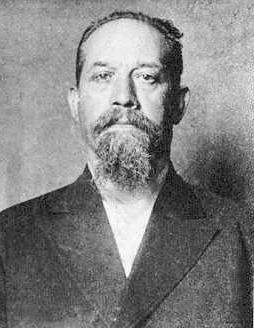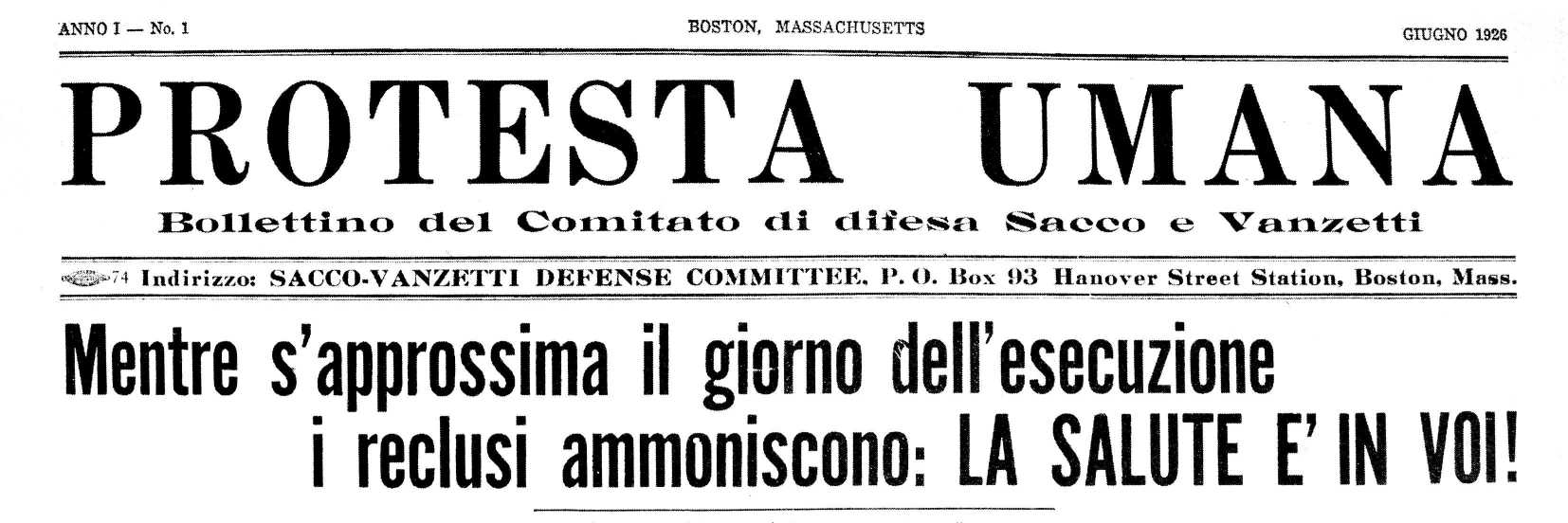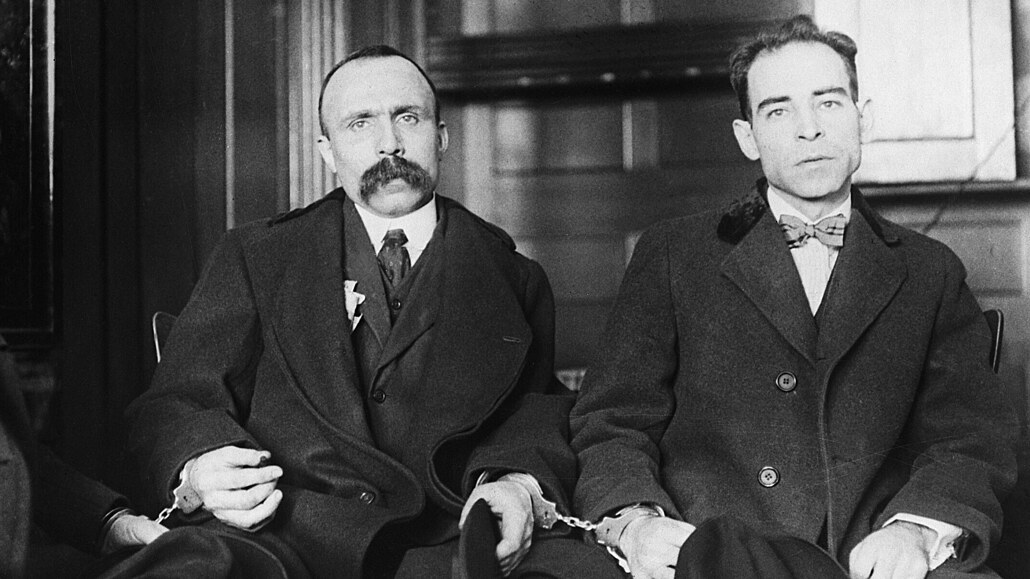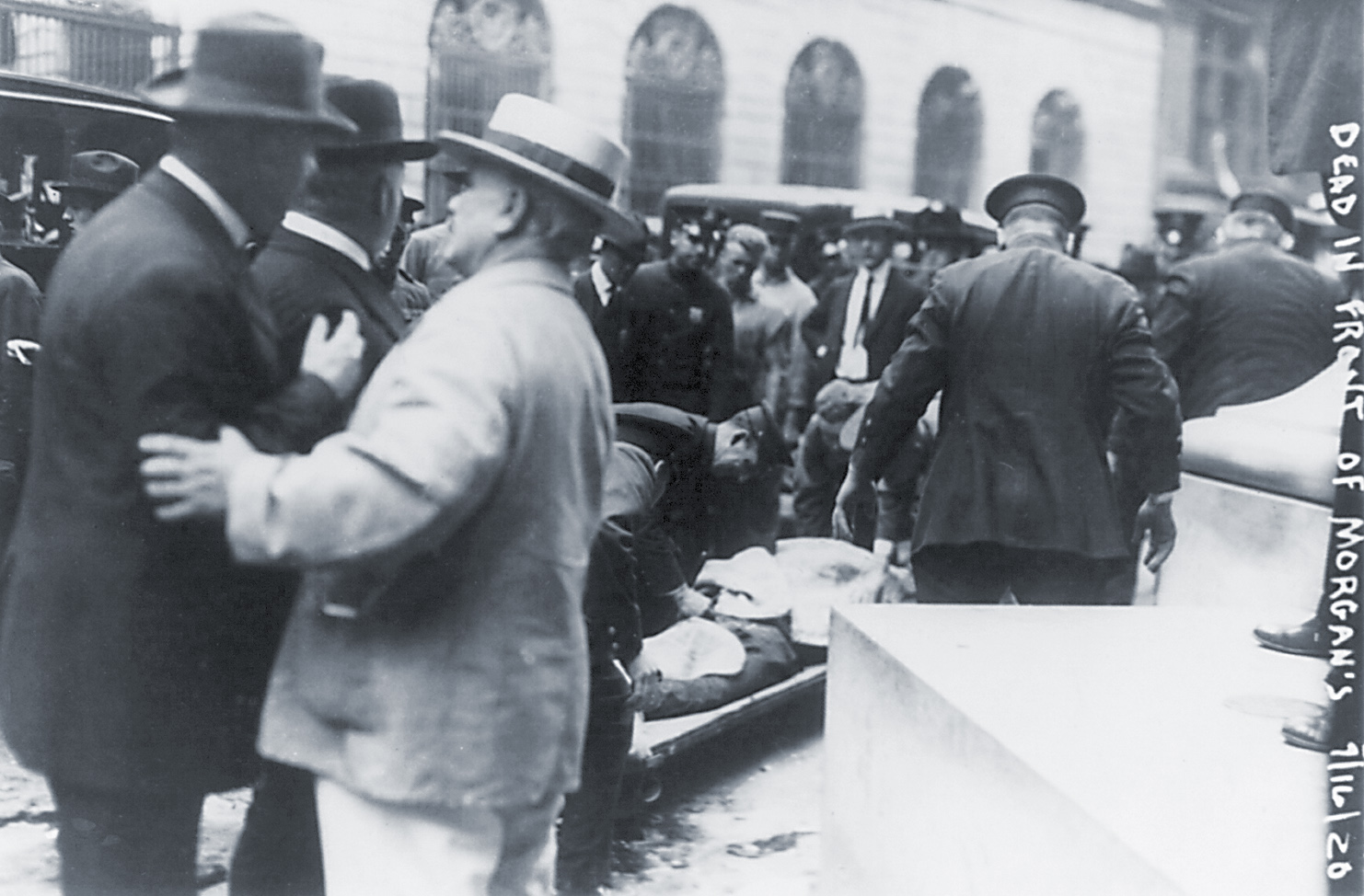|
Galleanisti
(Italian for Galleanists), followers of anarchist Luigi Galleani, were primary suspects in a campaign of bombings between 1914 and 1920 in the United States. Composition The Galleanisti were a group of Italian anarchists and radicals in the United States who followed Luigi Galleani and his message of "heroic" violence in the face of capitalist "oppression". Galleani was a figurehead in the Italian anarchist movement who, following the violence of the 1913 Paterson silk strike, turned from promoting a general strike to promoting individual acts of violence against capitalist targets. He believed that the spectacle of terrorism would trigger popular revolt. For the part of his followers, Galleani prompted a symbolic war that continued after his deportation and the raid on his newspaper. The police used ''La Salute è in voi'', Galleani's Italian-language bomb-making handbook, to profile anarchist attackers. Historians later used the handbook as proof of Galleanist respons ... [...More Info...] [...Related Items...] OR: [Wikipedia] [Google] [Baidu] |
La Salute è In Voi
' was an early 1900s bomb-making handbook associated with the Galleanisti, followers of anarchist Luigi Galleani, particularly in the United States. Translated as "Health Is in You!" or "Salvation Is within You!", its anonymous authors advocated for impoverished workers to overcome their despair and commit to individual, revolutionary acts. The Italian-language handbook offered plain directions to give non-technical amateurs the means to build explosives. Though this technical content was already available in encyclopedias, applied chemistry books, and industrial sources, ''La Salute è in voi'' wrapped this content within a political manifesto. Its contents included a glossary, basic chemistry training, and safety procedures. Its authors were likely Galleani and his friend Ettore Molinari, a chemist and anarchist. The handbook was first advertised in Galleani's ''Cronaca Sovversiva'', an anarchist newspaper, read by his American followers, in 1906. American police and histo ... [...More Info...] [...Related Items...] OR: [Wikipedia] [Google] [Baidu] |
Luigi Galleani
Luigi Galleani (; 1861–1931) was an Italian anarchist active in the United States from 1901 to 1919. He is best known for his enthusiastic advocacy of "propaganda of the deed", i.e. the use of violence to eliminate those he viewed as tyrants and oppressors and to act as a catalyst to the overthrow of existing government institutions. From 1914 to 1932, Galleani's followers in the United States (known as ''i Galleanisti''), carried out a series of bombings and assassination attempts against institutions and persons they viewed as class enemies. After Galleani was deported from the United States to Italy in June 1919, his colleagues are alleged to have carried out the Wall Street bombing of 1920, which resulted in the deaths of 40 people. Early life and career Luigi Galleani was born in the city of Vercelli, Italy, to a family of modest means. Galleani became an anarchist as an adolescent, while studying law at the University of Turin in northern Italy. Leaving the university b ... [...More Info...] [...Related Items...] OR: [Wikipedia] [Google] [Baidu] |
Mario Buda
Mario Buda (1883–1963) was an Italian anarchist active among the militant American Galleanists in the late 1910s and best known for being the likely assailant of the 1920 Wall Street bombing, which killed 40 people and injured hundreds. Historians implicate Buda in multiple bombings, though the documentary evidence is insufficient to prove his responsibility. He emigrated from Italy's Romagna region, a cultural connection that would recur throughout his life. After working itinerant jobs across the United States and a short return to Romagna, Buda settled in Boston's Roxbury neighborhood, where he ran a cleaning company and grew close to Italian anarchists and disciples of Luigi Galleani. The Galleanists Sacco and Vanzetti were among his best friends. Buda traveled with a Galleanist group to Mexico for several months in 1917 to prepare for European revolution that never arrived. With waning morale and news of Galleani's deportation, Buda and the Galleanists began to plan a ... [...More Info...] [...Related Items...] OR: [Wikipedia] [Google] [Baidu] |
Bresci Circle
The Bresci Circle was a group of New York City anarchists remembered for a failed bombing attempt on St. Patrick's Cathedral in 1915, in which two of its members were arrested. The group was named after Gaetano Bresci, a New York anarchist who killed King Umberto I of Italy. Origins In July 1900, the anarchist Gaetano Bresci assassinated the King Umberto I of Italy. Several months earlier, Bresci had been living in New York City. According to Thomas Tunney of the New York Police Department, Bresci had attended an Elizabeth Street meeting of anarchists where he accused the others of being cowards and they accused him of being a police spy. The meeting was called off as its heat threatened to attract police attention, but Bresci was incensed and it is implied that this affront precipitated into his plot to return to Italy and become a martyr. A group of New York City anarchists subsequently formed as the Bresci Circle, in Bresci's honor. By 1914, almost 600 members met regula ... [...More Info...] [...Related Items...] OR: [Wikipedia] [Google] [Baidu] |
Sacco And Vanzetti
Nicola Sacco (; April 22, 1891 – August 23, 1927) and Bartolomeo Vanzetti (; June 11, 1888 – August 23, 1927) were Italian immigrant anarchists who were controversially accused of murdering Alessandro Berardelli and Frederick Parmenter, a guard and paymaster respectively, during the April 15, 1920, armed robbery of the Slater and Morrill Shoe Company in Braintree, Massachusetts, United States. Seven years later, they were executed in the electric chair at Charlestown State Prison. After a few hours' deliberation on July 14, 1921, the jury convicted Sacco and Vanzetti of first-degree murder and they were sentenced to death by the trial judge. Anti-Italianism, anti-immigrant, and anti-Anarchist bias were suspected as having heavily influenced the verdict. A series of appeals followed, funded largely by the private Sacco and Vanzetti Defense Committee. The appeals were based on recanted testimony, conflicting ballistics evidence, a prejudicial pretrial statement by the jury f ... [...More Info...] [...Related Items...] OR: [Wikipedia] [Google] [Baidu] |
Wall Street Bombing
The Wall Street bombing occurred at 12:01 pm on Thursday, September 16, 1920, in the Financial District of Manhattan, New York City. The blast killed thirty people immediately, and another ten died later of wounds sustained in the blast. There were 143 seriously injured, and the total number of injured was in the hundreds. The bombing was never solved, although investigators and historians believe it was carried out by Galleanists (Italian anarchists), a group responsible for a series of bombings the previous year. The attack was related to postwar social unrest, labor struggles, and anti-capitalist agitation in the United States. The Wall Street bomb killed more people than the 1910 bombing of the ''Los Angeles Times'', which was the deadliest act of terrorism on U.S. soil up to that point. Attack At noon, a horse-drawn wagon passed by lunchtime crowds on Wall Street and stopped across the street from the headquarters of the J.P. Morgan & Co. bank at 23 Wall Street, ... [...More Info...] [...Related Items...] OR: [Wikipedia] [Google] [Baidu] |
Abarno And Carbone In Court LCCN2014698686
The Bresci Circle was a group of New York City anarchists remembered for a failed bombing attempt on St. Patrick's Cathedral in 1915, in which two of its members were arrested. The group was named after Gaetano Bresci, a New York anarchist who killed King Umberto I of Italy. Origins In July 1900, the anarchist Gaetano Bresci assassinated the King Umberto I of Italy. Several months earlier, Bresci had been living in New York City. According to Thomas Tunney of the New York Police Department, Bresci had attended an Elizabeth Street meeting of anarchists where he accused the others of being cowards and they accused him of being a police spy. The meeting was called off as its heat threatened to attract police attention, but Bresci was incensed and it is implied that this affront precipitated into his plot to return to Italy and become a martyr. A group of New York City anarchists subsequently formed as the Bresci Circle, in Bresci's honor. By 1914, almost 600 members met regula ... [...More Info...] [...Related Items...] OR: [Wikipedia] [Google] [Baidu] |
Luigi Gallean2
is a fictional character featured in video games and related media released by Nintendo. Created by Japanese video game designer Shigeru Miyamoto, Luigi is portrayed as the younger fraternal twin brother and sidekick of Mario, Nintendo's mascot. Luigi appears in many games throughout the ''Mario'' franchise, oftentimes accompanying his brother. Luigi first appeared in the 1983 Game & Watch game ''Mario Bros.'', where he is the character controlled by the second player. He would retain this role in many future games, including ''Mario Bros.'', ''Super Mario Bros.'', ''Super Mario Bros. 3'', ''Super Mario World'', among other titles. He was first available as a primary character in ''Super Mario Bros. 2''. In more recent appearances, Luigi's role became increasingly restricted to spinoffs, such as the ''Mario Party'' and ''Mario Kart'' series; however, he has been featured in a starring role in '' Luigi's Hammer Toss'', ''Mario is Missing'', ''Luigi's Mansion'', '' Luigi's Man ... [...More Info...] [...Related Items...] OR: [Wikipedia] [Google] [Baidu] |
American Entry Into World War I
American(s) may refer to: * American, something of, from, or related to the United States of America, commonly known as the "United States" or "America" ** Americans, citizens and nationals of the United States of America ** American ancestry American ancestry refers to people in the United States who self-identify their ancestral origin or descent as "American," rather than the more common officially recognized racial and ethnic groups that make up the bulk of the American peop ..., people who self-identify their ancestry as "American" ** American English, the set of varieties of the English language native to the United States ** Native Americans in the United States, indigenous peoples of the United States * American, something of, from, or related to the Americas, also known as "America" ** Indigenous peoples of the Americas * American (word), for analysis and history of the meanings in various contexts Organizations * American Airlines, U.S.-based airline headquar ... [...More Info...] [...Related Items...] OR: [Wikipedia] [Google] [Baidu] |
Draft Registration
Conscription (also called the draft in the United States) is the state-mandated enlistment of people in a national service, mainly a military service. Conscription dates back to Ancient history, antiquity and it continues in some countries to the present day under various names. The modern system of near-universal national conscription for young men dates to the French Revolution in the 1790s, where it became the basis of a very large and powerful military. Most European nations later copied the system in peacetime, so that men at a certain age would serve 1–8 years on active duty and then transfer to the military reserve force, reserve force. Conscription is controversial for a range of reasons, including conscientious objection to military engagements on religious or philosophical grounds; political objection, for example to service for a disliked government or unpopular war; conscription and sexism, sexism, in that historically men have been subject to the draft in the most ... [...More Info...] [...Related Items...] OR: [Wikipedia] [Google] [Baidu] |





